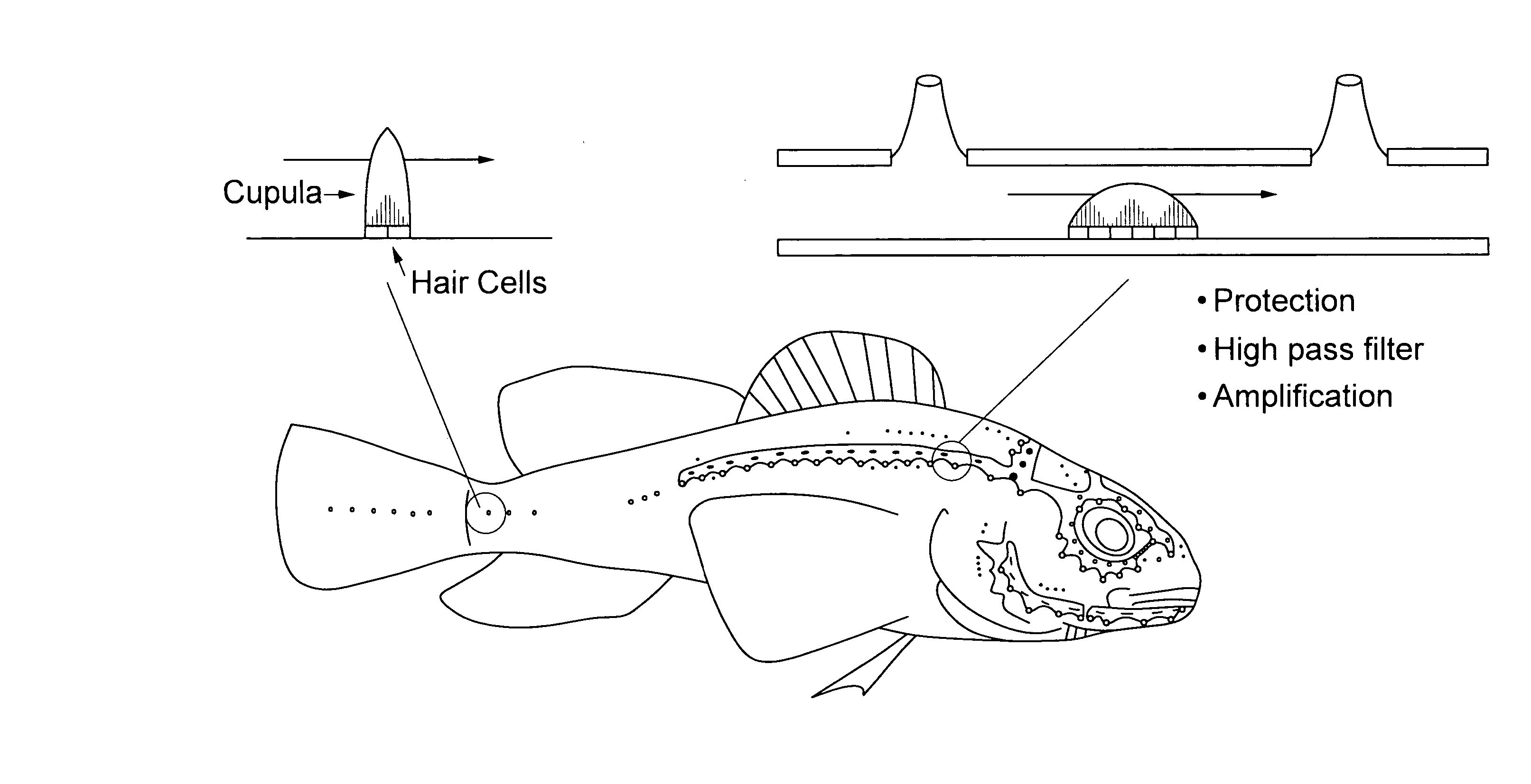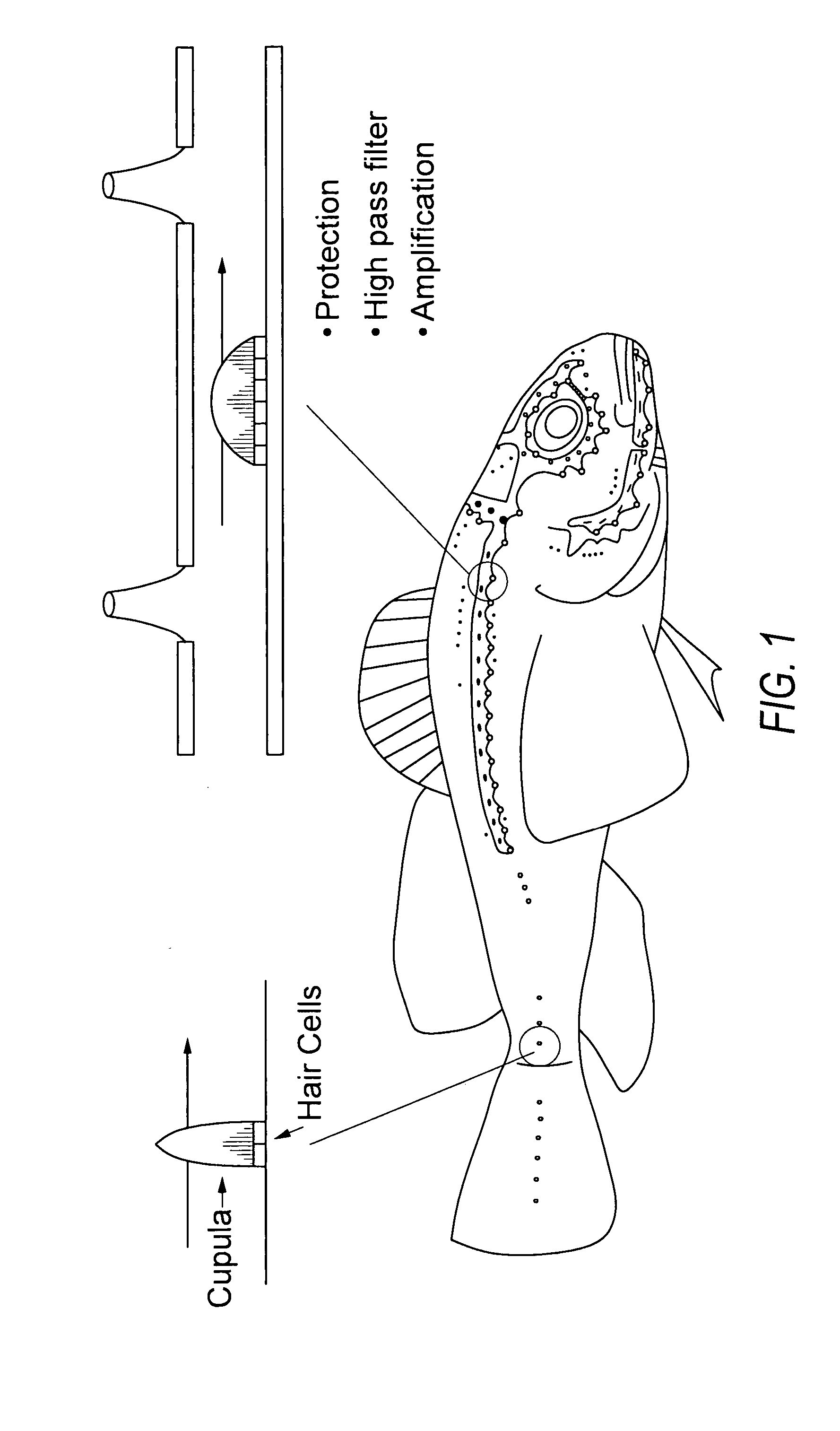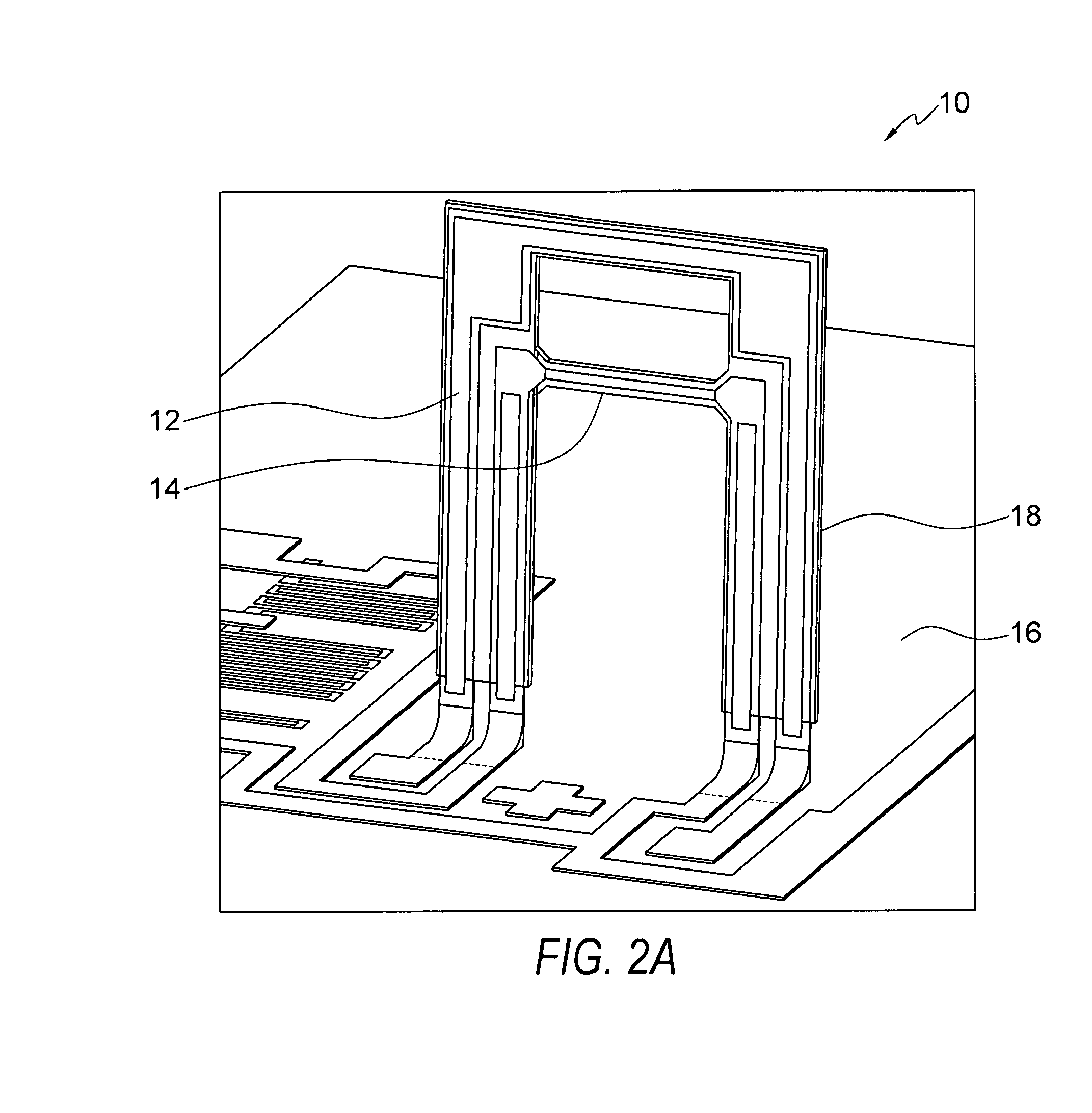Artificial lateral line
- Summary
- Abstract
- Description
- Claims
- Application Information
AI Technical Summary
Problems solved by technology
Method used
Image
Examples
Embodiment Construction
[0035] Fish and many underwater animals utilize multimodal sensitive skin that can detect flow, pressure distribution, electrical potential and field, and local vortex. In nature, a lateral line is a spatially distributed system of flow sensors found on the body surface of fish and aquatic amphibians. A lateral line, for example, usually spans the length of the fish's body. Lateral lines form spatial-temporal images (AC, DC) of nearby sources based on the sources' hydrodynamic signatures.
[0036] For example, linearly distributed along the lateral line of fish are clustered sensor hair cell bundles embedded in a gel-like dome called neuromasts, each capable of sensing local flow velocity. Neuromasts can be classified into two types: superficial neuromasts, as shown in FIG. 1 (left), and canal neuromasts, as shown in FIG. 1 (right). A superficial neuromast is situated on the surface of the fish and responds in proportion to fluid velocity. By contrast, a canal neuromast is packaged in...
PUM
 Login to View More
Login to View More Abstract
Description
Claims
Application Information
 Login to View More
Login to View More - R&D
- Intellectual Property
- Life Sciences
- Materials
- Tech Scout
- Unparalleled Data Quality
- Higher Quality Content
- 60% Fewer Hallucinations
Browse by: Latest US Patents, China's latest patents, Technical Efficacy Thesaurus, Application Domain, Technology Topic, Popular Technical Reports.
© 2025 PatSnap. All rights reserved.Legal|Privacy policy|Modern Slavery Act Transparency Statement|Sitemap|About US| Contact US: help@patsnap.com



